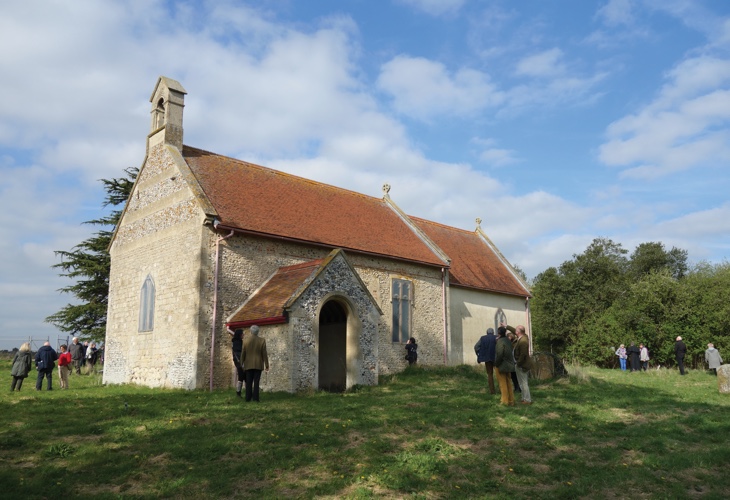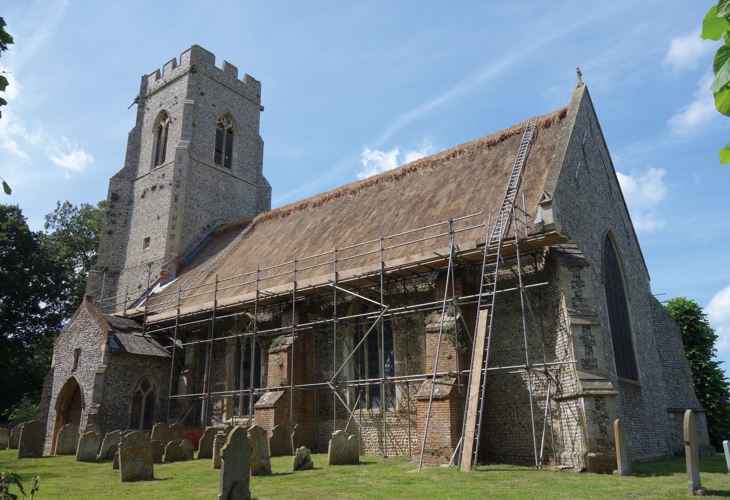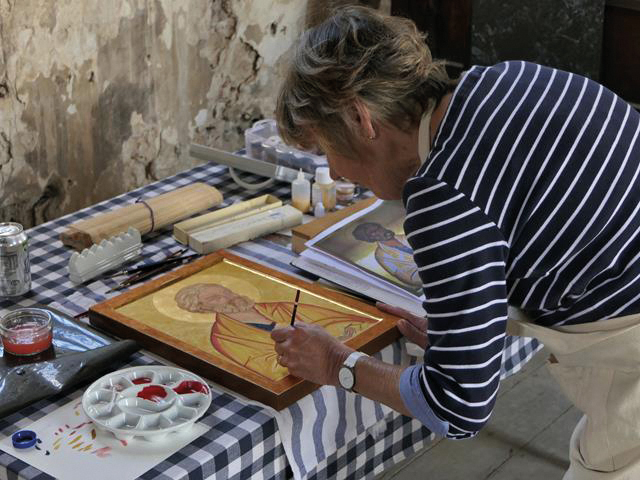Staring out timelessly from her mahogany cabinet, the wax effigy of a woman in 18th Century dress is one of the most striking, and downright spooky, features I have come across on my church visits, but more on that later…
One thing I have learned on my ‘church crawling’ journey is that no two churches are the same. There are many features in common to the casual observer – usually a tower, a nave, a chancel, a porch – but dig a little deeper and the variety and wonder are almost endless. To paraphrase that lovable character, Forrest Gump, churches “are like a box of chocolates, you never know what you’re gonna get”!
This surprise element is the petrol that fuels the fire when it comes to visiting churches. Whether it is something big and bold like the 15th Century tomb of Thomas Morley in St Andrew’s, Hingham or something small and unobtrusive like the 14th Century door handle at All Saints’, Runhall, every church I have visited has many, some or even just one nugget of interest that makes the trip worthwhile.
Alongside the visual, tangible features of a church sits the stories that are entwined with every building and the centuries long history of the people that lived, loved and died in the parish. Within each graveyard, on every wall, beneath your feet as you walk up the nave are thousands of these stories, some brief, some extensive, some pompous, some deeply moving – but all painting a rich picture of the past.
My approach to church visiting is random and unscientific, I feel this adds to the mystery. I simply look at the extensive map in ‘The guide to Norfolk Churches’ by D.P. Mortlock, choose an area and set off. My modus operandi is to go to a church, see what I find, then read up on it after looking around, I have always missed something!
With this startlingly unacademic approach I set off for the area north and east of Downham Market. This day’s journey includes several wonderful churches, each with many features and stories that merit description but must purely exist here as a list of names – St Peter and St Paul’s in Watlington, All Saints’ in Shouldham, Holy Trinity in Marham and St Martin’s in Fincham. But the church that left the deepest impression was the final call of the day, Holy Trinity, Stow Bardolph, tucked away off the busy A10 road.

In itself, this is a fairly unremarkable church sitting in a broad, well-kept churchyard. The gravestones lean this way and that, ravaged by time. The tower is Norman at the base but rises in the later perpendicular style. What appears to be a brick aisle on the north side of the chancel is, in fact, the Hare family mausoleum chapel, built in 1624 by John Hare. Stepping inside the north door all seems rather gloomy and I am instantly aware of the over-confident touch of the Victorian restoration of the 1840s.

Nonetheless there are two treats lurking in the shadows. Above the south door are the immense wooden, gilded royal arms of Charles II and in the chancel a memorial plaque to James William Adams VC. Reverend Adams was the last civilian, and only clergyman, to have been awarded the Victoria Cross. He was serving as the chaplain in the British army during the second Afghan War and as the citation published in the London Gazette describes:
‘During the action at Killa Kazi, on the 11th December 1879, some men of the 9th Lancers having fallen with their horses, into a wide and deep “nullah’ or ditch, and the enemy being close upon them, the Reverend J.W. Adams rushed into the water (which filled the ditch), dragged the horses from off the men upon whom they were lying, and extricated them, he being at the time under a heavy fire, and up to his waist in water.’
I moved on through the chancel arch into the mausoleum and immediately it feels as if the lights have been turned on, the result of the large, south-facing windows. All around you are the dazzling memorials to the Hare family, some twenty in total, described by some experts as the best collection in Norfolk.

They vary in size and grandeur, but most are remarkable in some way. The very large monument to Susanna Hare is by the prodigious sculptor Peter Scheemakers, renowned for his statue of Shakespeare in Westminster Abbey, and his only work in Norfolk. Along the north wall is the slightly over the top figure of Sir Thomas Hare (1693) lying grandly on top of his tomb dressed in a wig and Roman armour. He was a mere 36 when he died and his wife Elizabeth erected the memorial; she was laid to rest beside him 56 years later.

Next to Sir Thomas is a large mahogany case with an inscription written on top. I rather wish I’d read this first, but I swiftly opened the door to be confronted by the alarming vision of Sarah Hare, or rather a wax effigy of her, glaring out wearing a scarlet hood and period clothing. Her round face stares out defiantly, almost challenging you to fix her unmoving eyes. The shock is visceral and disconcerting all alone in this church. I cannot help but think of Oliver Cromwell and his instructions to paint him “warts and all”.

Having got over the shock I read the inscription:
‘Here lyeth the body of Sarah Hare, the youngest daughter of Sir Thomas Hare Bart and Dame Elizabeth his wife and sister to the present Sir Thomas Hare who departed this life the IX day of April MDCCXLIV and ordered this effigies to be placed here”
This wax effigy was Sarah’s request in her will of 1743, and the extensive instructions were carried out to the letter. Over the years damage inevitably occurred and the effigy was restored by none other than Madame Tussaud’s in 1984. It is the only memorial made out of wax outside Westminster Abbey. As I left the church, rather more speedily than usual, resisting looking behind me, I couldn’t help but think of my childhood visits to Madame Tussaud’s and the similar shock I received on visiting the infamous Chamber of Horrors! It was a timely reminder, once again, that you never quite know what you’ll find in Norfolk’s multitude of churches.
Rob Gladstone Aug 2025







